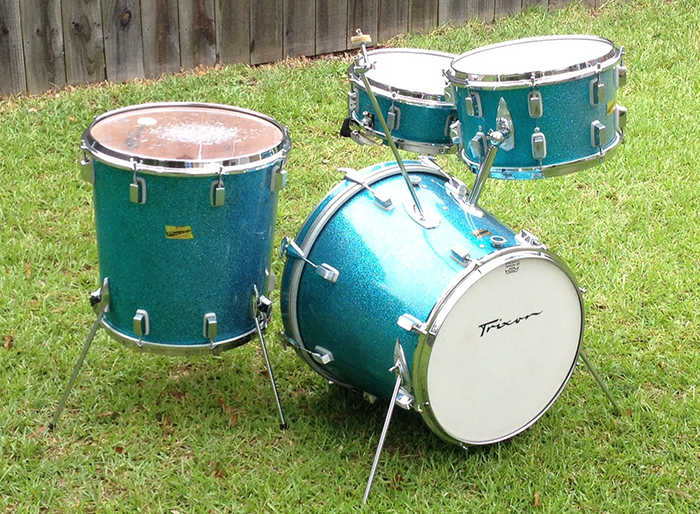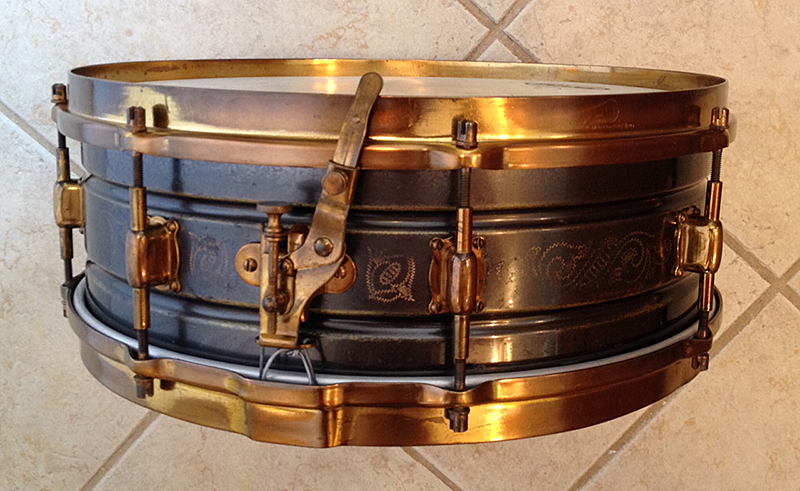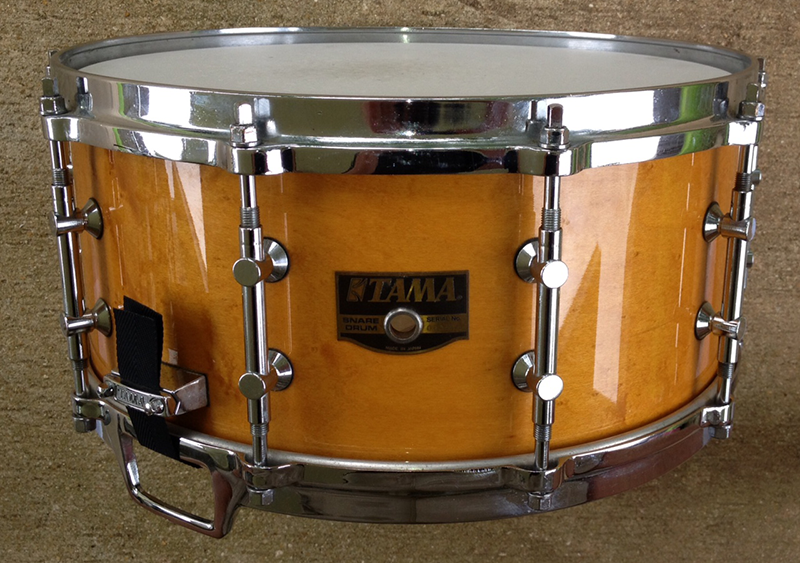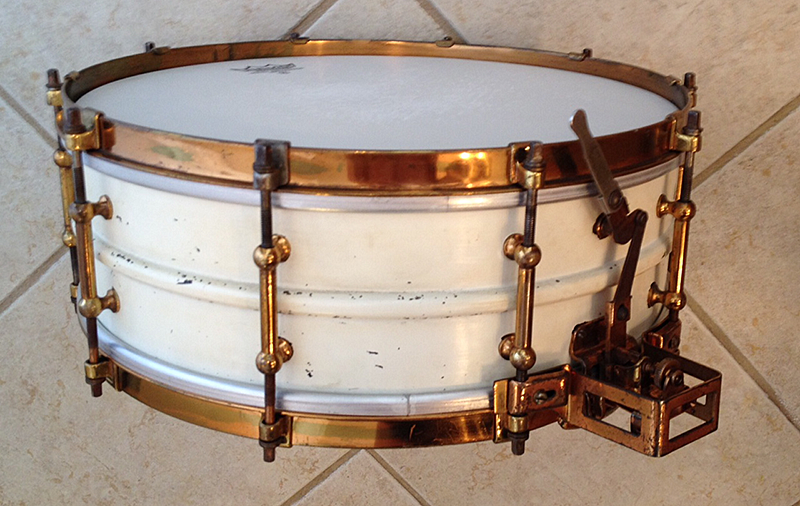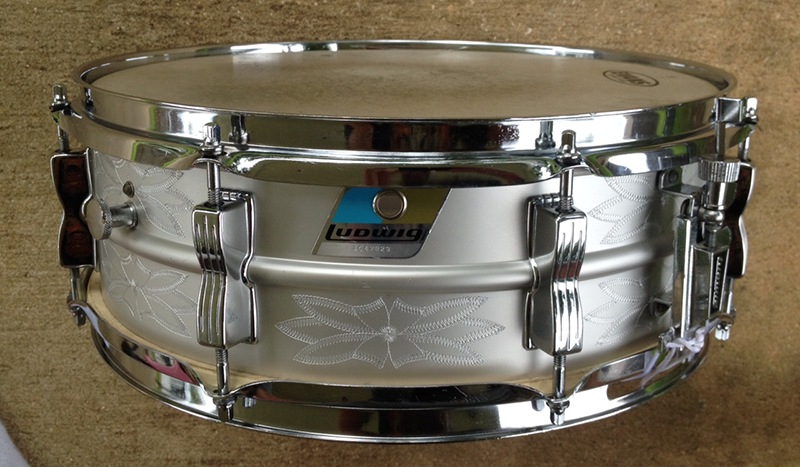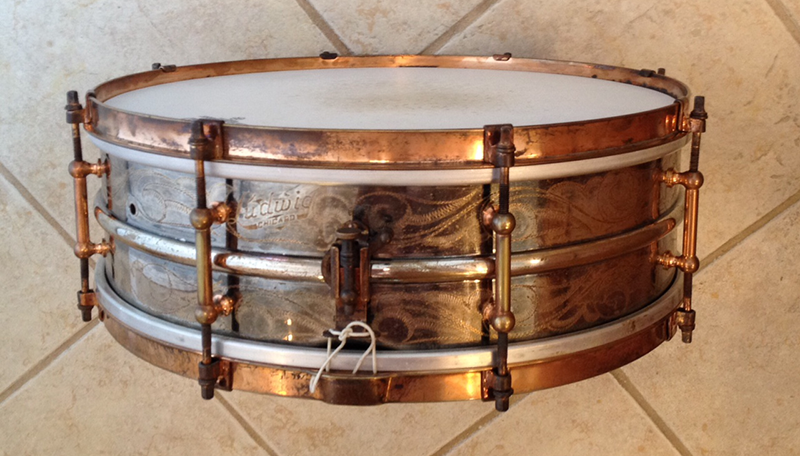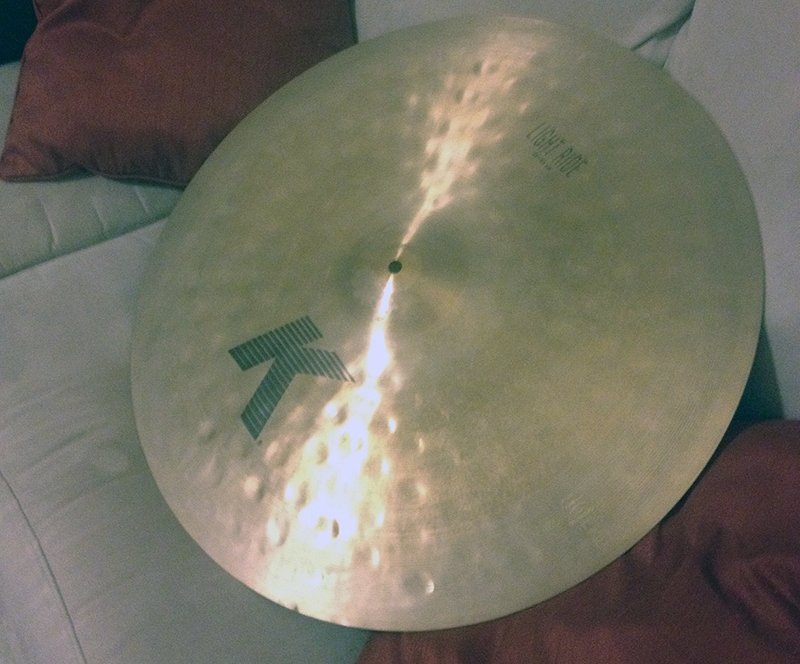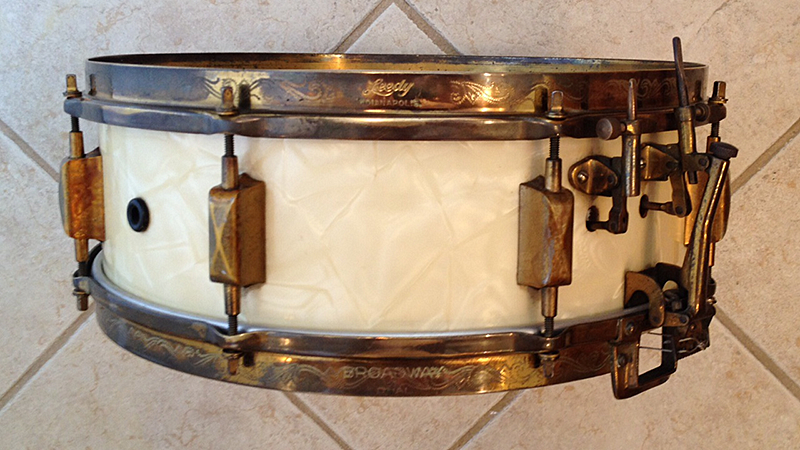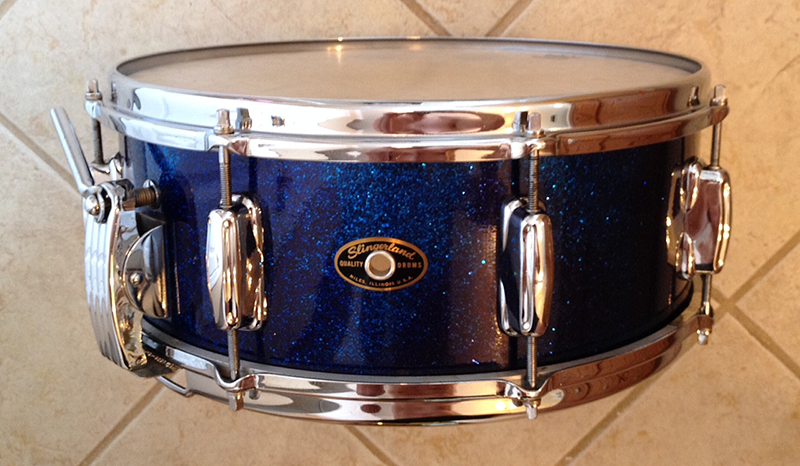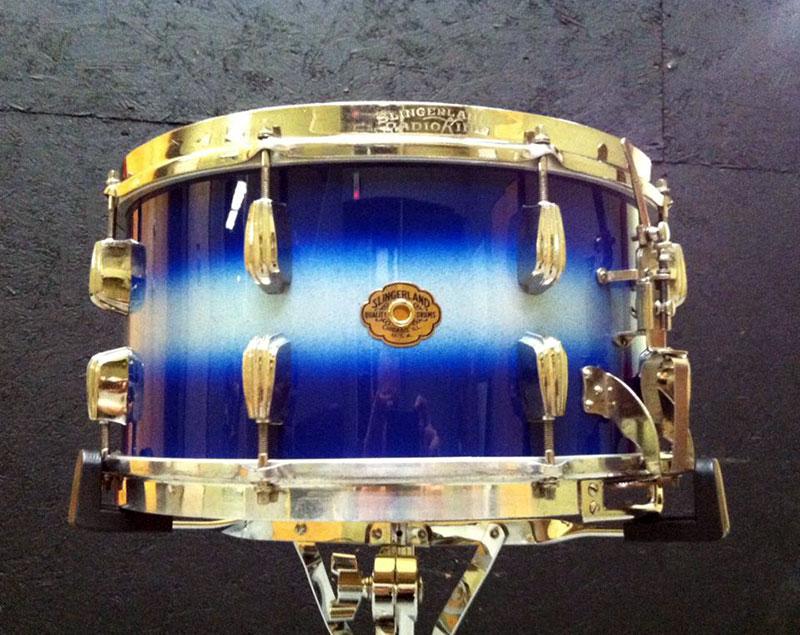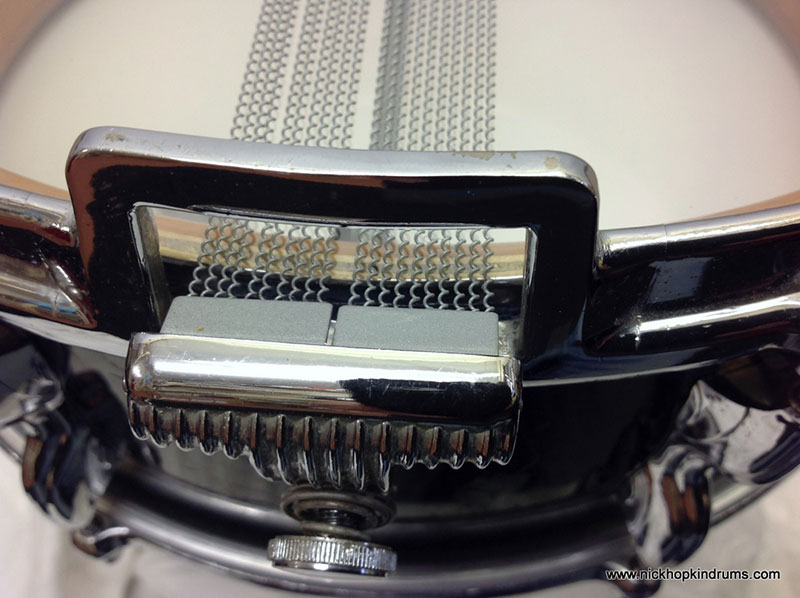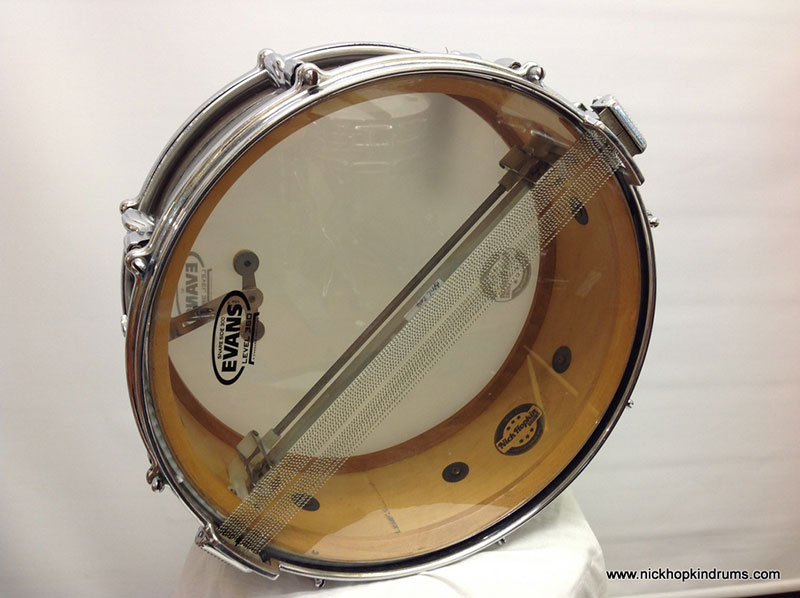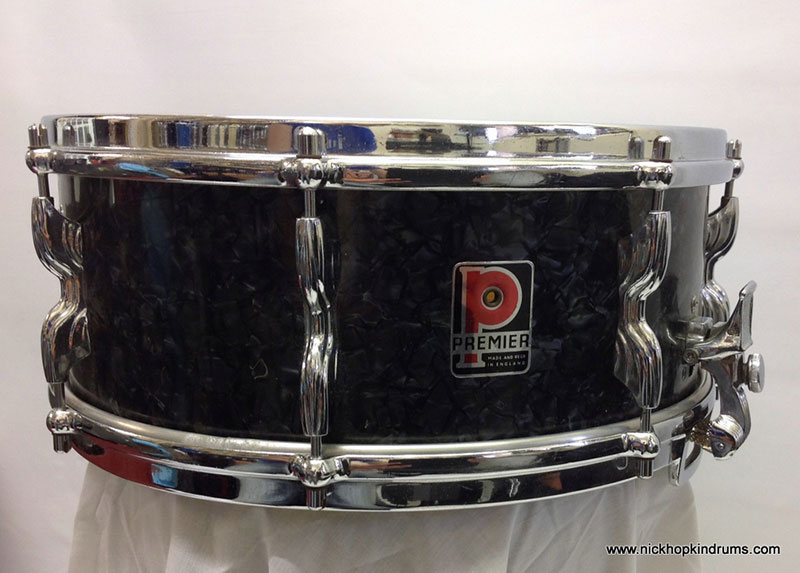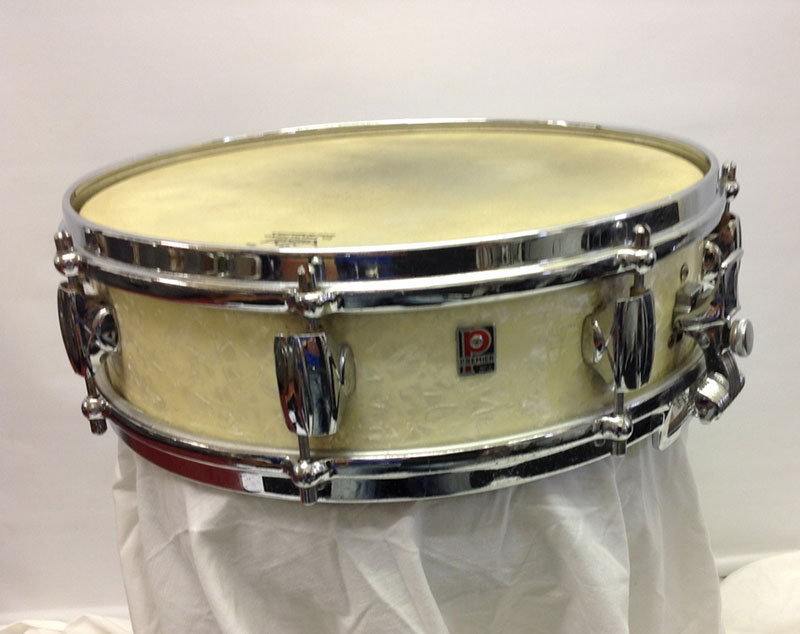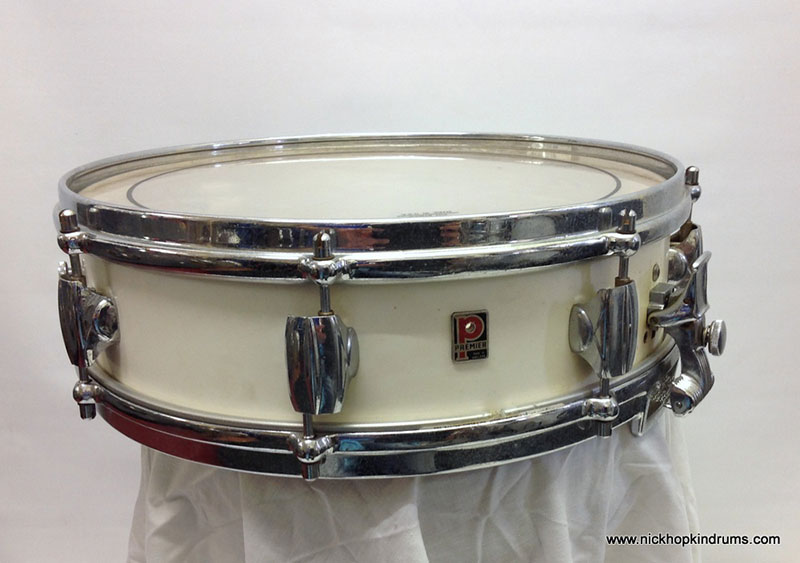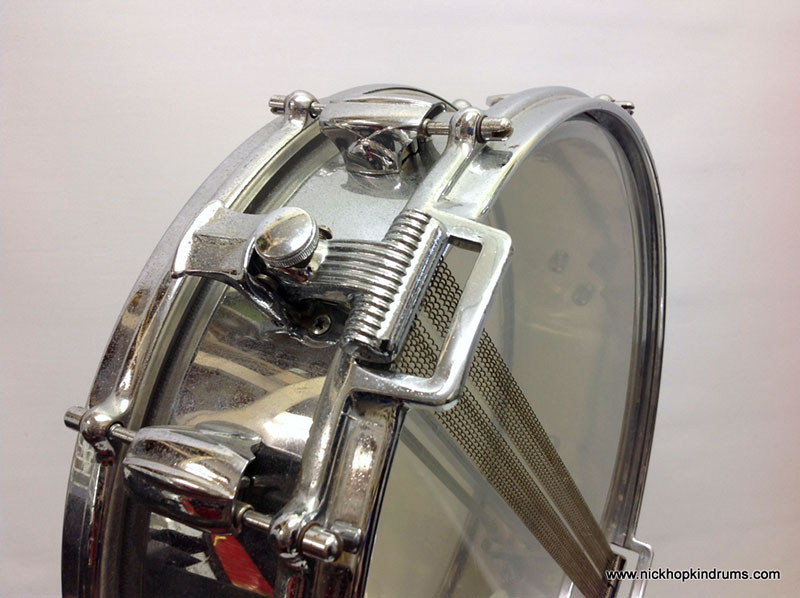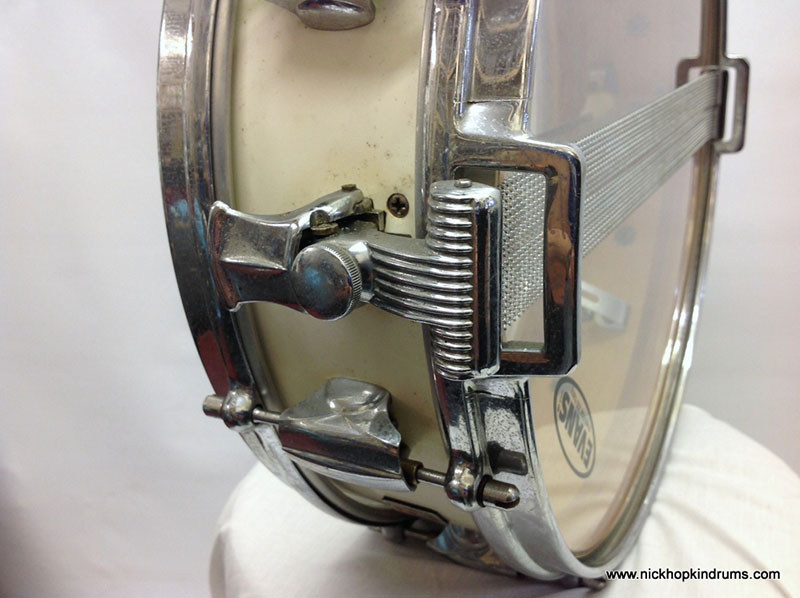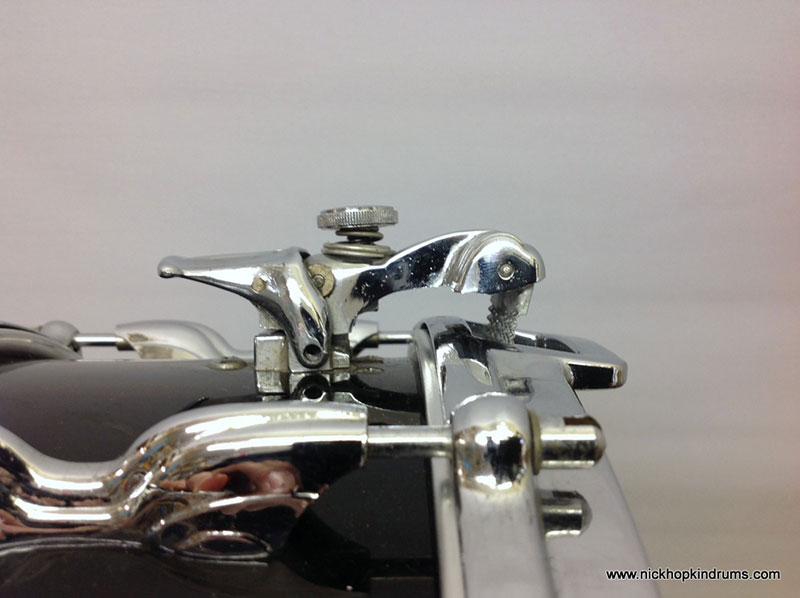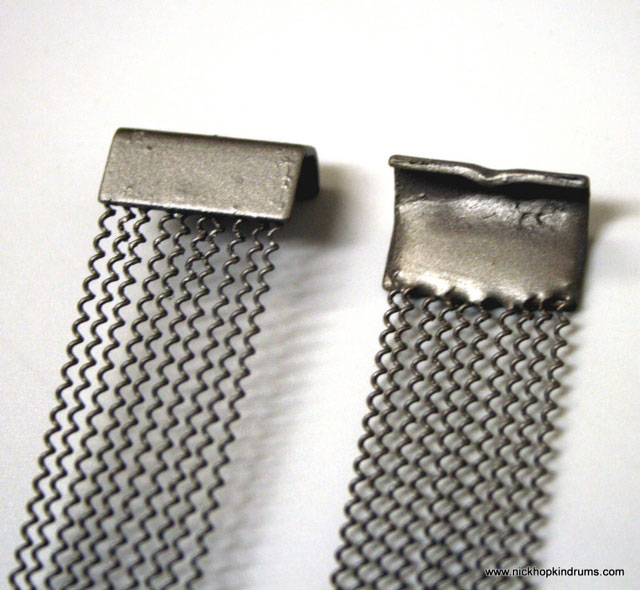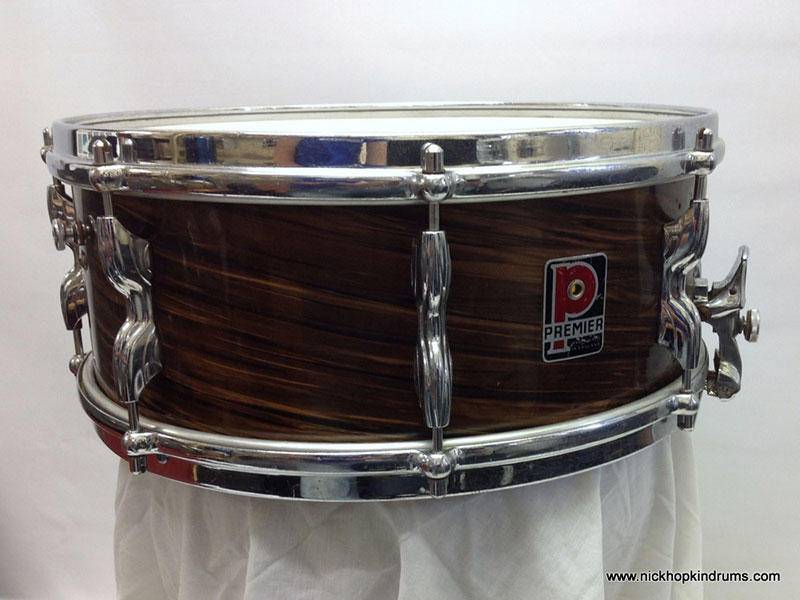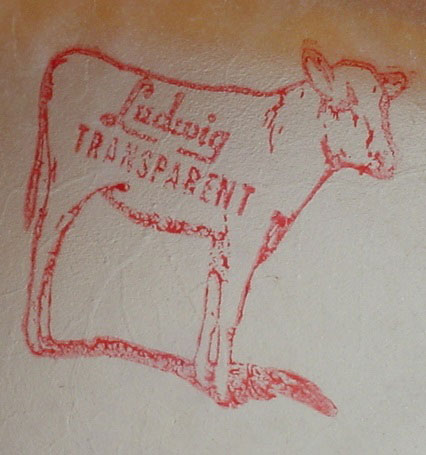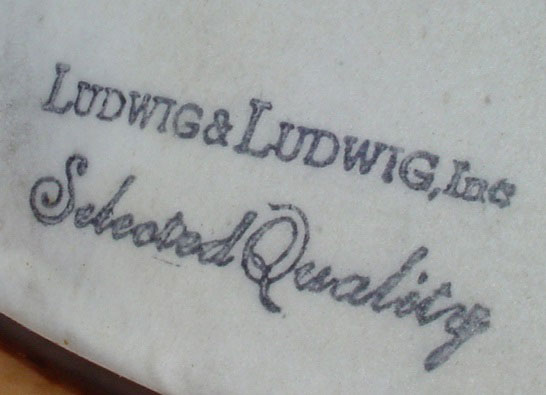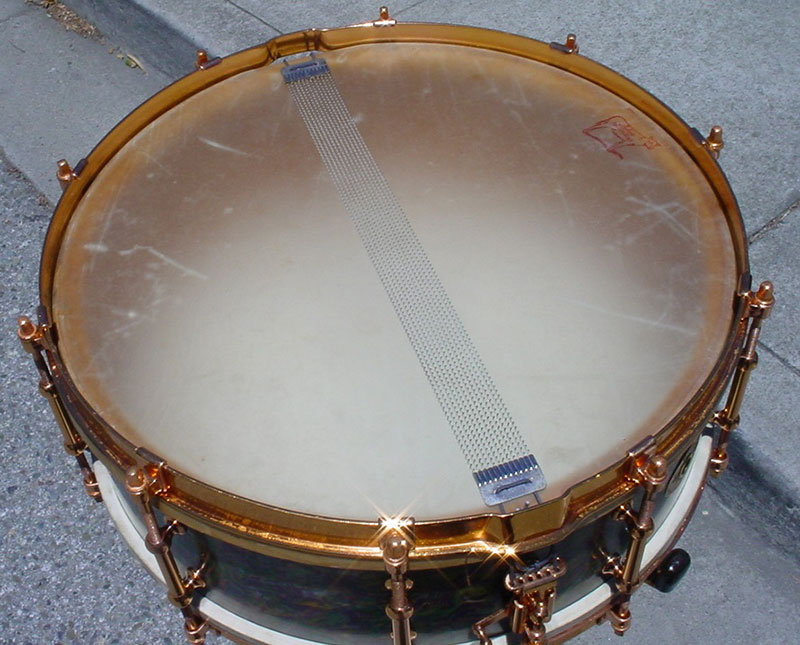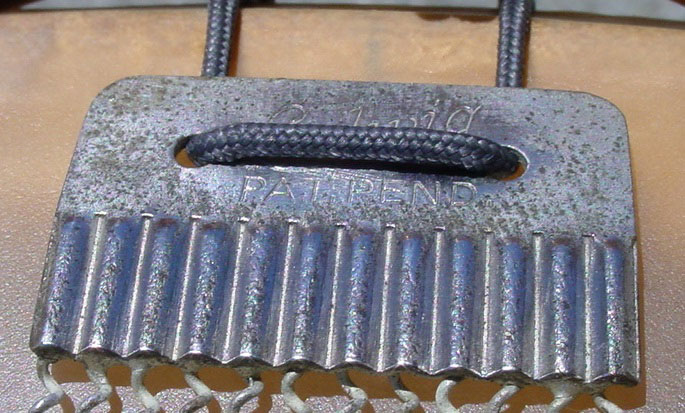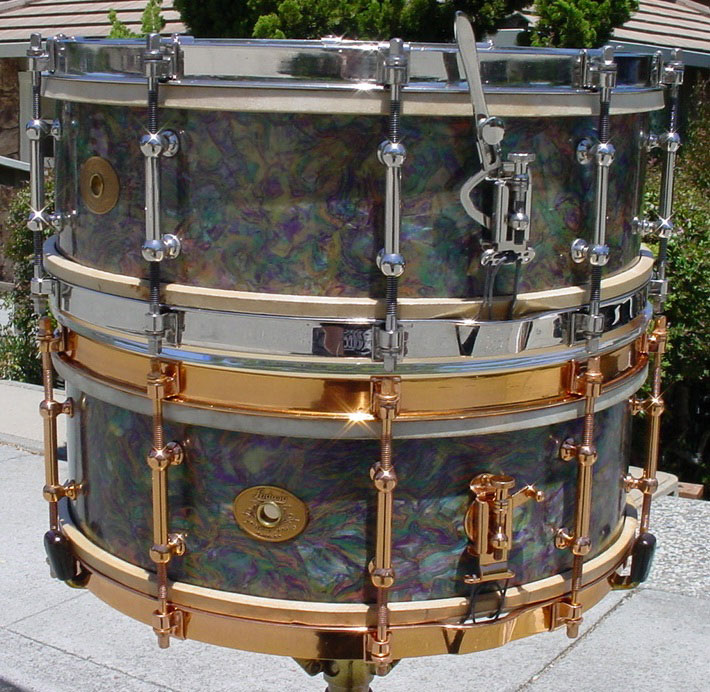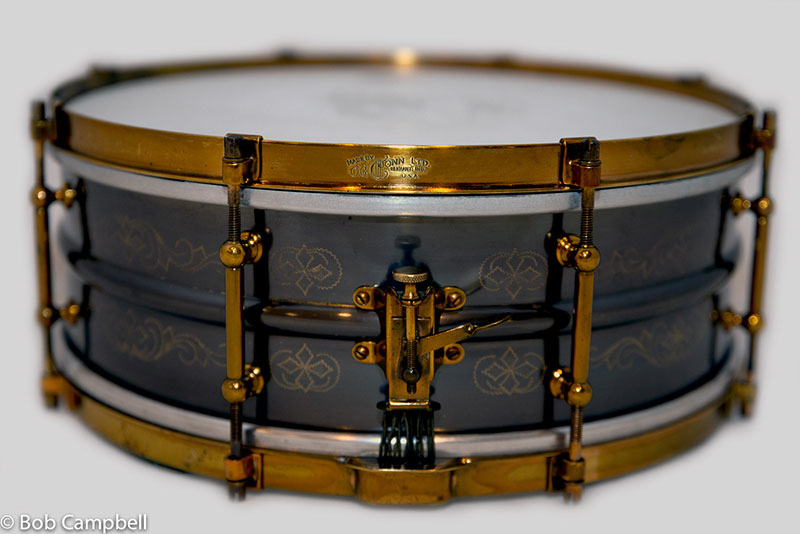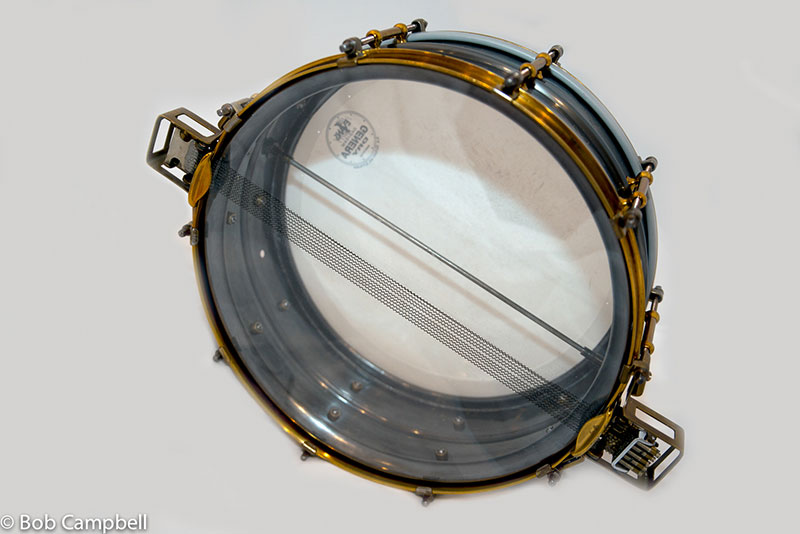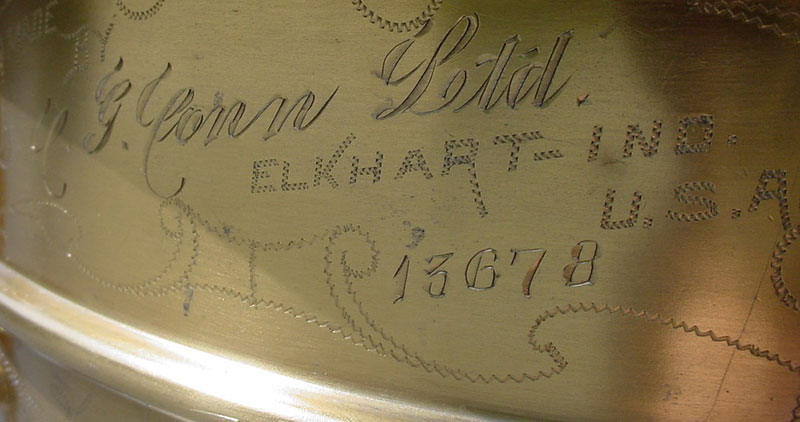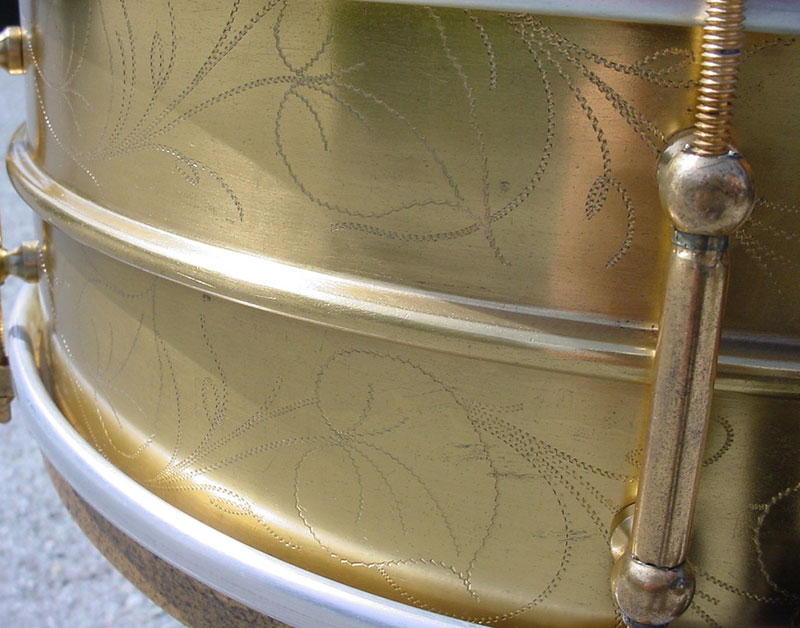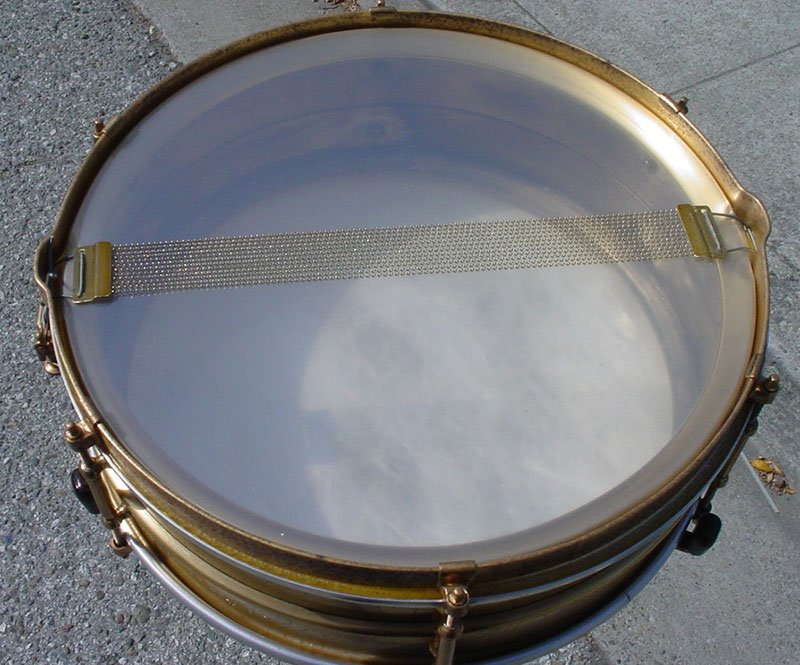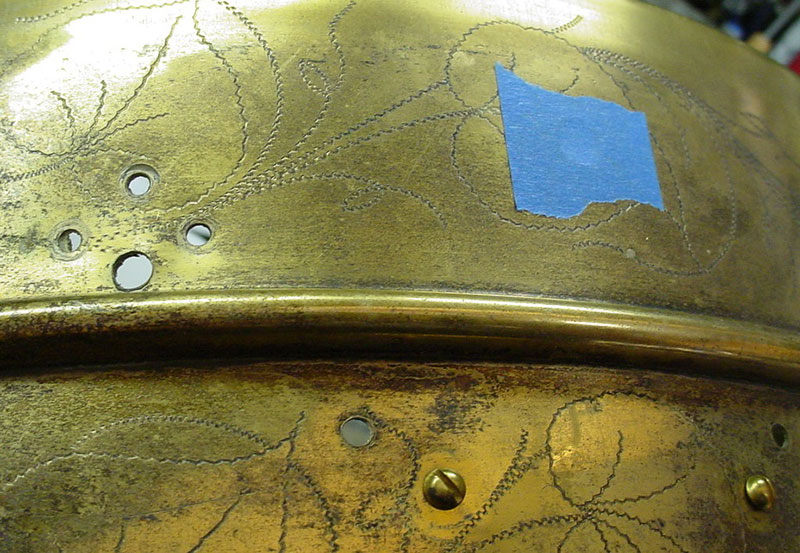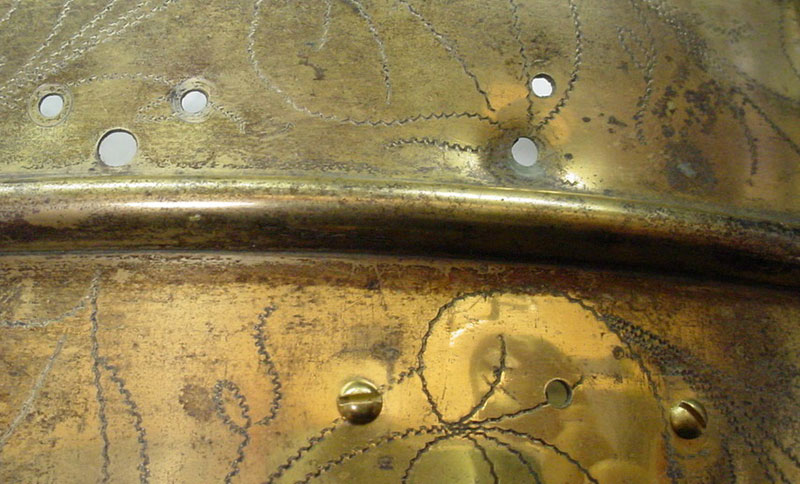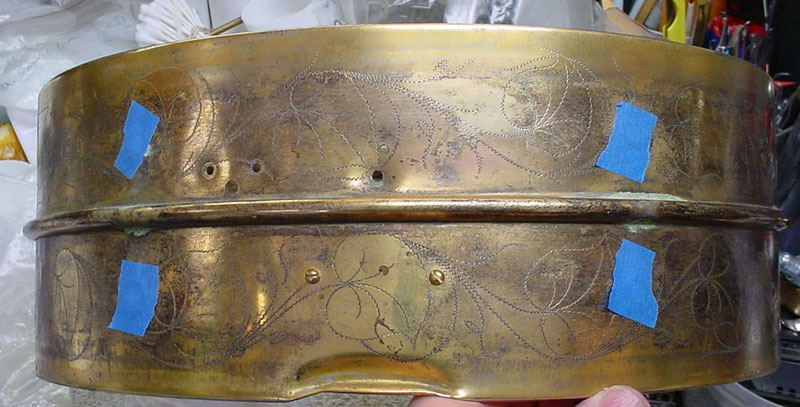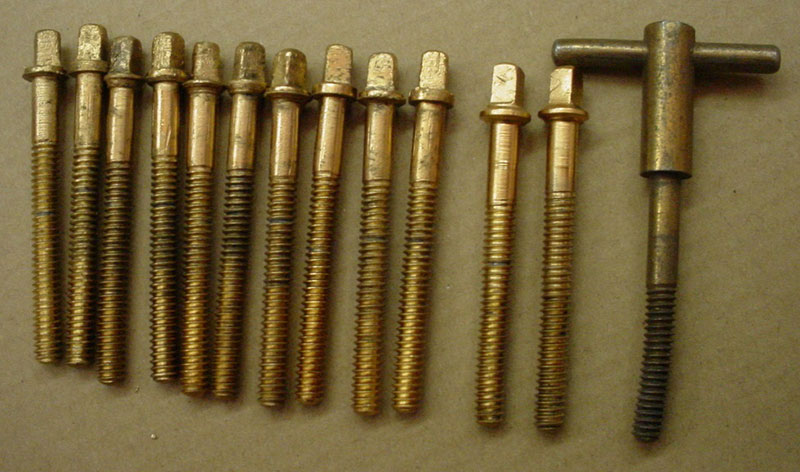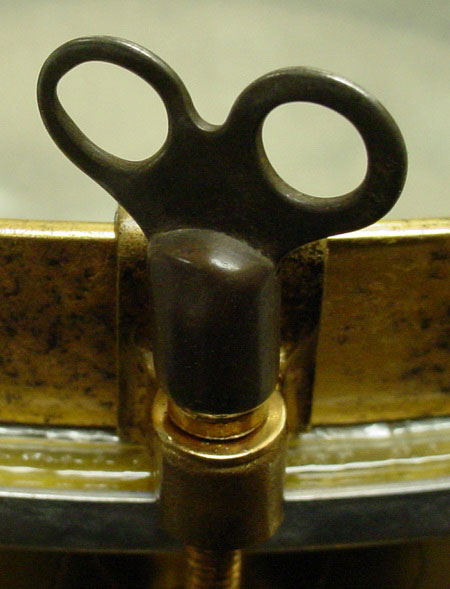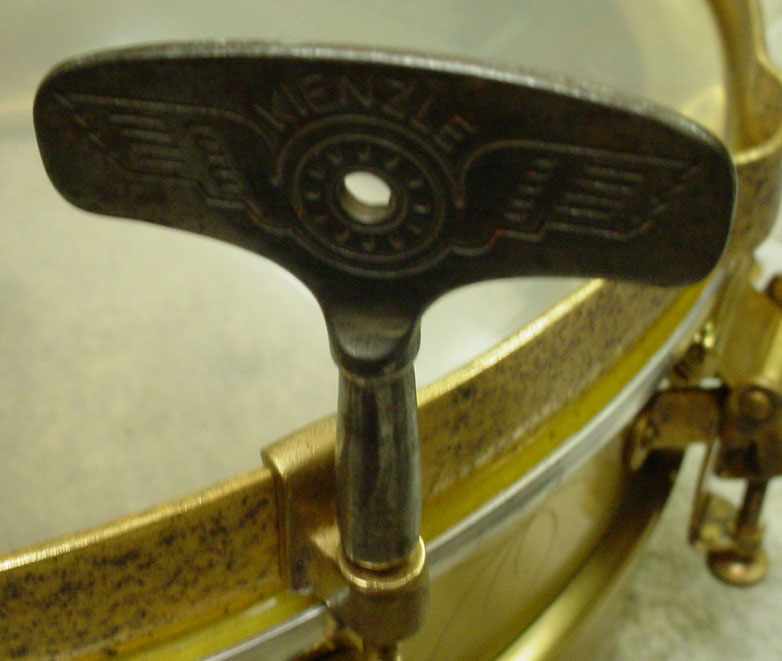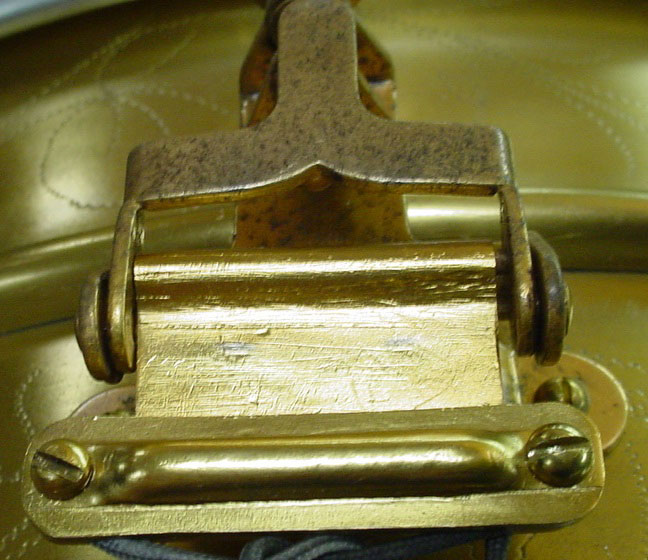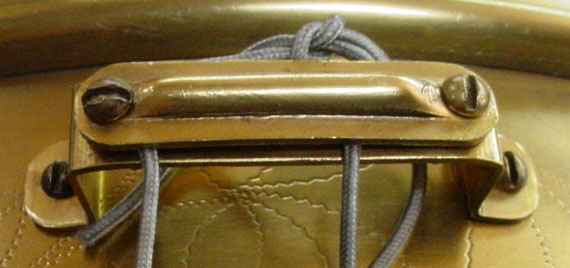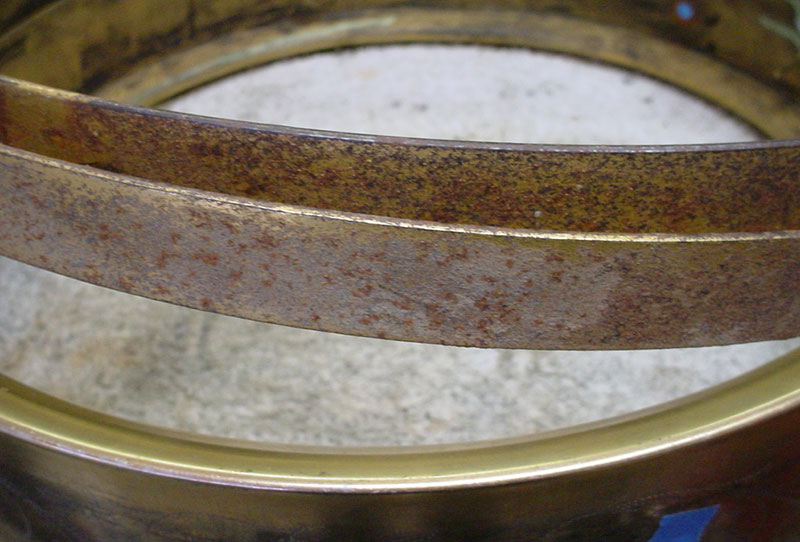In 1962 I was asked to present a clinic with Louie Bellson at a local hotel in Rochester, NY. I was teaching at the Eastman School of Music and a local music store – Music Lover’s - was sponsoring the event. Ben Strauss of Rogers Drums contacted me and the date was set for November 7, 1962. Louie did the drum set and I did the classical snare drum. Since I also played drum set Louie and I traded fours etc. It was also at this time that I was teaching Steve Gadd and he was in the audience. I told Louie that he should hear this kid play. Louie invited him to the stage and Steve blew Louie away. It was at this moment that Steve, Louie and I became good friends for life.
Read moreIs it custom? Is it boutique? Does it make a difference?
I live in an area that has a lot of local breweries, and people around here talk and write about beer a lot. So recently, when I saw an article about the blurring of lines as to what’s considered a “craft brewery” and what isn’t, I realized that there’s a connection between drums and beer that I hadn’t considered: confusion about industry categories and how to describe them.
Read moreUPDATE: Nashville Drum Show & Snare Drum Olympics 2014
The Nashville Drum Show is just around the corner, September 20 & 21. Six weeks away! It’s not too late to rent an exhibitor booth or enter your snare drum into the Olympics. All of the information is available atwww.nashvilledrumshow.com.
---
Who’s exhibiting at the show? Look at the list at the bottom of this post. The show is triple the size it was in 2012! The hall is really close to being full. We have 150 booths, new exhibitors are signing up daily, and there is always a last minute rush - so if want a booth you need to act now! This isn’t a sales pitch, just a heads up. We ran out of corner booths already, so we created some new ones – and we also have outside “demo” booths. Anyone can rent a booth as long as it’s music related.
Read moreThe Levon Helm Snare Drum
So the drum was given to Levon by Ringo, clearly played and signed by Levon to the son of another tremendously influential drummer, Richie Hayward. Four degrees of separation, perhaps? I was happy to win the auction, securing both drum for its history and the ability to help Seve in my own small way.
Read moreMike Clark: Words of Wisdom, Part 3
"OK… So the snares broke on ‘God Make Me Funky’ and I continued to play it on Tom. The engineer Fred Catero takes a brass wastebasket, puts a mike in it and puts the now fixed snare on top of the basket. He then plays the track to the snare which makes a sound at each backbeat, but leaving out all the ghost notes. I hated that sound, and without the ghost notes the beat sounded pedestrian to my ears…Like anyone could have played it. Now it’s one of the most sampled drum loops ever. They dug it, and some drummers say Hey, Man - I worked hard to get my snare to sound like yours!"
Read moreNashville Drum Show Hits the Road
The Nashville Drum Show is hitting the road on Saturday and Sunday, August 16-17th and making stops in Knoxville, TN and Atlanta, GA. Titled "Drummer's Showcase and Swap Meet," these mini-shows are free to the public - not only to attend, but to buy and sell as well.
"Bring your used and vintage gear to sell and trade - bring your new or old drums to show off and play... or just show up and join the drum hang!" - Nashville Drum Show
Here's some photos NSMD readers have submitted of items that will be up for sale over the weekend:
Are you planning on coming and want to show off what you're bringing - either for show or for sale? Let us know!
The event on Saturday will take place at The Whammy Bar, 8426 Kingston Pike in Knoxville, and on Sunday at ATL Drum Collective, 503 Amsterdam Ave NE. Hours are 12-6 PM on both days. There are no rules, and it is a bring-your-own everything atmosphere and open to anyone and everyone - including vendors, collectors and manufacturers. Participants can also purchase Nashville Drum Show tickets on location, $75 for a VIP pass and $15 for a regular day admission. Tickets purchased at the showcase events will be entered into a raffle for a custom built drum set, custom snare drums, and many other prizes. You do not need to be present at the show to win.
In addition to the advanced ticket raffle, ATL Drum Collective is offering 10% off all purchases over $25, and will have select overstock marked down for the event. Joe Ciucci will be showing his 1940 Radio King's at the Atlanta event, beautifully restored by ATL Drum Collective.
For more information, visit www.nashvilledrumshow.com.
1929-32 Leedy Broadway Dual (1st Gen)
Here’s a snare drum that I purchased at the 2014 Chicago Show from Brian Drugan of Drugan’s Drums. First generation Leedy Duals are fairly scarce, nothing earth shattering here but this drum did have something cool that I’ve never seen or heard of before.
Read moreFather to Son: T.S. Monk ‘Keeps it in the Family’
T.S. Monk, son of virtuoso jazz pianist Thelonious Monk, has carved out his own niche as a respectable and identifiable voice in bop drumming circles. But, he never forgot where he came from.
T.S. had the good fortune of soaking in all the musical vibes surrounding him at home. From receiving his first drumset from Max Roach to listening to his father, Miles Davis, John Coltrane or Art Blakey upstairs in his living room, there was no escaping it – he was presented with the ‘gift’ at an early age.
Read moreA Good Rattling Instrument
Maker: Abner D. StevensCirca: Late 1790’s-Early 1800’s Dimensions: 14.5”(h) x 16.5”(dia.)
As hostilities with England became a not too distant memory, the inhabitants of the new American Nation now had the task of rebuilding not only the physical damage caused by no less than seven years of a very personal war, but had an entire economy to repair as well. Born in a small New England town in 1770, a young and industrious Abner D. Stevens started making drums at his shop in Hancock, Massachusetts, in 1794 as his principle means of income.
Read more1950s Leedy & Ludwig Broadway Set
I went in to the lovely home of the owner of this set. He is in his 80s, and after a few minutes of greeting I was taken to the set. It wasn't set up, but I was encouraged to set them up and play on them or whatever I wanted to do. I just enjoyed looking at everything. There was also a wonderful cymbal set included, some of them were "K" Zildjians. There were stands, other hardware, and a box full of great old percussion "stuff." After I had looked it all over, I sat down with the man and enjoyed a long talk with him. He has a life filled with great experiences and I'm glad I got to hear some of them. If I had left without the drums and only got to talk to this guy, I would still be richer from the experience.
Read more1939-41 Leedy Broadway Standard "T-Bird" Engraved Snare
This was an easy one but I do have a restoration tip to pass along. This is purely personal but maybe a few restorers out there will find this useful. If you notice on all of my restorations you will see “aged” snare cord. I think that it looks out of place to have brand new white snare cord on an 85 year old drum; functionally it’s no problem, visually it drives me nuts. Here are two tips for you... 1. I use Yamaha snare cord model SNC-10 but before installing the snares I run the cords through a used (blackened) piece of Cape Cod Polishing Cloth, this darkens (antiques) the white cord and in my opinion makes it more realistic looking... 2. I just discovered Puresound makes model MS4 (dark brown brained line). This is what I used on the drum in this article.
Read moreVirgil Donati's "In This Life" US Tour
Over a year in the making, the much anticipated solo record by Virgil Donati arrived and has been creating buzz around musicians' circles since it's arrival. The album was produced, written and arranged by Donati, and mixed by Alex Argento, a close collaborator. Virgil’s drumming has arguably been at the leading edge for at least a decade, and as this record displays, his compositional and orchestration skills are also coming to the fore. Says Donati: “After all these years of playing, I still feel like I’ve barely scratched the surface!”
Read moreJuly 2014 - Red Headed Step Children
But what about all the vintage and rare drums that have been modified with extra holes, unoriginal parts etc.? What about those red headed bastard stepchildren?
It is my theory that they will become more and more desirable as the herd is thinned over the coming decades. What made me realize this was one particular seller at the Chicago Drum Show who asked me if there were going to be a lot of “hipsters” at my Nashville Drum Show. He said that in Austin, where there are hundreds and hundreds of working drummers in that busy music scene, they are buying “player" vintage kits and snares, not the collector level drums. They are buying them for the sound, not the collectability. It made me realize just how much the vintage drum world has grown and how the less than perfect old drums need to be preserved too.
Read more1940s Restored Radio Kings
We found Joe Ciucci on Facebook a few months ago sharing pictures of his grandfather's one-owner 1940s Slingerland Radio Kings. These drums were masterfully restored by ATL Drum Collective in Atlanta, GA. We're going to run a feature article and interview with Joe in the coming months, stay tuned for more information and history, pictures of the full kit, and audio/video too!
Furcinitti Custom Drums
Italian Pride!
This custom drum comes to us from Furcinitti Custom Drums of Austin, TX. Their motto is "quality, beauty, clarity" and it shows! Check this drum out at the Nashville Drum Show's Snare Drum Olympics, this September 20-21st.
For more information on Furcinitti Drums, visit: www.spfdrums.com.
Premier Royal Ace Snare Drum
To me one of England’s finest wooden shell snare drums is Premier’s Royal Ace. Favoured by many English players in the 1960s – Clem Cattini (44 UK hit singles), John Wilson (Van Morrison, Rory Gallagher, numerous sessions) Brian Bennett (Shadows), and even Ringo played one on the early Beatles recordings.
This flagship snare drum superseded the ‘super ace’ of the 50s, appearing for the first time in the 1963 catalogue in a 5.5” & 4” model, featuring a small ‘P’ badge. By 1966 the badge was bigger and a 6.5” model was also available, now in the classic glitters and pearls associated with 60s Premier drums.
The drums are 3 ply Birch shells with beech reinforcement hoops and die cast hoops as standard. Art deco lugs in highest quality chrome that even 50 years later shine up so well. Tone control damper (single and double dot) and a parallel snare mechanism.
Let me explain this further; a central bar inside the shell moves up and down when the snare lever is thrown on or off. The snare wires themselves extend further than the diameter of the drum, and clip onto a small bar at each end (two ten strand wires, called the double ten).Wire tension is adjusted via a knob at each end. Why so complex, I hear you say? Well, by the wires extending further than the diameter of the drum, good response is ensured due to contact with the shell at both ends. The catalogues from that time boast that “unwanted snare buzz is totally eliminated” and that it “brings snare response to a new high level”.
The drum was also available in a 4” model with offset lugs as well as chrome over brass shell. Both these are rarer than the 5.5” shell that appears to have been the most common.
Most mid to late 60s Premier kits would have come with a Royal Ace snare drum, so they seem to be in abundance in the UK.
Unfortunately the wires are no longer in production by Premier and many drums have had the parallel mechanism stripped out and replaced with a standard throw. I have, however, a British company currently making replica wires for these drums in small runs that fit perfectly and sound great too. You can get that real backbeat crack out of them, with the die cast hoops drying the sound compared to triple flanged. With the wires loosened off a little, this snare is perfect for jazz and a more sensitive sound.
Many Premier players have a Royal Ace in their collection, although by the number of enquiries I receive, many are searching for replacement wires. If you’ve held onto one for a while with the hope of giving it a new lease of life, now’s the time while wires are available again! If you’ve never played one, then I’d urge you to try one out – in my opinion one of the best wooden British snare drums made.
Expect to pay $350 for a drum in good condition complete with wires.
1928-30 L&L "Rainbow" Pearl
Hi all,
I just got this 1928-30 5 x 14 Ludwig & Ludwig “Rainbow Pearl”/DeLuxe Standard Model snare drum from my good friend and fellow collector Donn Bennett of Donn Bennett Drum Studios in Belleview, WA. The drum needed no cleaning or restoring. The solid maple shell interior is clean with a tight grommet/badge and the “finish” is very clean. There is no tone control, tone controls show up in the L & L catalog around 1932 hence the 1928-30 dating. The DeLuxe hardware was restored by Adrian Kirchler of AK Drums in Italy. The only thing I added was of-the-era top and bottom Ludwig & Ludwig calf heads and Ludwig & Ludwig Snappi-type wires.
The real story is in the identification of the finish that is on this drum. I’ll try to explain as best as I can but there are definite inconsistencies that I will site along the way. The finish on this drum (and on the only other drum like this that I have ever seen) has been referred to as “Rainbow Pearl”. I have included a comparison photo of both drums. Ludwig & Ludwig never had a cataloged finish called Rainbow Pearl but they did have the Rainbow Outfit but the drums were finished in Lavender Pearl (1928-35). Leedy introduced Rainbow Pearl in 1930 and it has been suggested that the finish on this drum was taken from the “Leedy side” of the building as Leedy and Ludwig & Ludwig were literally built across the way from each other as they were both owned by the C. G. Conn Co. at that time but the Leedy Rainbow Pearl snare that I own does not look at all like the “Rainbow Pearl” drum in this article. I have also included a comparison photo of the Leedy drum and this drum so the reader can see what I am talking about.
Another theory is that this could be a variation of a “run” of 1928-30 Peacock Pearl. More photos are available on page 153 of The Ludwig Book by Rob Cook, this is a nice presentation of Peacock Pearl I and Peacock Pearl II. Please note that at the top of page 153 Rob lists Peacock Pearl version I (1928-30) and Peacock version II (1930-32) but reverses the the order in the photos; the top photos should be labeled Peacock Pearl II and the bottom photos should be labeled Peacock Pearl I and be aware that the drum in the lower left is the “other” Rainbow Pearl drum that I mentioned earlier. Having fun yet, are you still with me? So what are we going to call this finish...Rainbow Pearl, Peacock Pearl I, a variation of Peacock Pearl I, a one-off run of an un-cataloged finish, a one-off special order, frog in a blender, Walt Disney threw up?
No matter what we call it I have come to really enjoy collecting this finish even though, as my good friend John Aldridge says, “that finish is as ugly as home made soap!” As always I welcome your comments, observations, information AND photos if you own a drum like this or if you have seen or heard of another drum like this one.
Enjoy! Mike Curotto
The Tuxedo & Black Beauty
“No Drum Left Behind" - the restoration of an engraved 1920sC.G. Conn Tuxedo and early 1930s Ludwig & Ludwig Black Beauty
There comes a time when every vintage drum collector finds a “diamond in the rough” and has to decide either to: 1) keep it original (but flawed), 2) do some restoration work, or 3) walk away from the deal. From a purist’s perspective, any change to a vintage drum will greatly diminish, if not destroy, its value. However, I would argue that there are times when salvaging a drum through expert restoration is truly warranted. Here are two such examples…
Some time ago, I stumbled across two such “rough diamonds” on Ebay. One auction had no other descriptor than “1920s-30s C.G. Conn 5X14 Brass Snare Drum.” I looked closely at the pics by eye and thought I saw some engraving on the shell. To examine it further, I downloaded the auction pics and zoomed in using Photoshop. Lo and behold, it looked like a 1920s C.G. Conn engraved Tuxedo with the characteristic four diamond cross pattern! The inside of the shell still retained the black nickel so I was pretty certain the outer black nickel plating had been removed. I won the auction for a very reasonable amount, so the thought of black nickel re-plating seemed like a worthwhile investment. When the drum arrived, my presumptions were confirmed. It was indeed an 8-tube lug, 1920’s Conn Tuxedo with “Made by C.G. Conn LTD, Elkhart, IN U.S.A.” stamped on the upper hoop, 4-screw “Presto-like” strainer, Knobby Gold hardware and shell engraving in beautiful condition. Next, I set about to do some research on what it would take to properly restore this drum. I needed to think long and hard about this, as it required additional investment and had to be done correctly if done at all. Meanwhile, another orphan drum serendipitously crossed my sights on Ebay.
This time, the drum was clearly identified as a “1920s-1930s engraved Ludwig Black Beauty.” The early 1930s art gold hardware looked amazingly well preserved for its age: 10 brass tube lugs, timepiece strainer; smaller, more rounded snare gates, “Super-Ludwig” embossed on the bottom hoop in block letters. The logo engraved on the shell was somewhat unusual, reading “Ludwig – Trademark” rather than the usual “Ludwig, Chicago U.S.A.”, and bounded by a rectangular box (actually, a parallelogram as I was corrected by my daughter) one panel to the left of the strainer. The catch was that the engraving was thoroughly blackened with none of the brass visible. During its lifetime, the drum had either been painted black or poorly re-plated. I took a gamble and placed a winning bid, hoping that there was some original black nickel underneath. When I got the drum, I sent pics out to Mike Curotto and Harry Cangany for their thoughts on the shell. None of them could be certain from the pictures whether it was black paint or nickel. So off the drum went to Mike Curotto’s shop for closer examination. A short time later, Mike gave me the unfortunate news - the drum had been painted and no black nickel remained.
This now left me with two wonderful vintage drums whose hardware was in great shape, the original engraving intact, but stripped down to the brass. I consulted Harry Cangany about restoration, weighing the concerns of valuation/devaluation vs. preservation. I finally came to the conclusion that these two drums needed to be brought back to life, to the way they looked in the 1920s and 30s (fortunately, Harry agreed ☺). This was not about vintage drum investment but more so about preserving our drum heritage.
I was convinced re-plating was the right thing to do. So, I contacted the amazing drumsmith, Adrian Kirchler (“AK”), in Italy. I was aware that AK not only made great drums for Ludwig (100th Anniversary Triumphal) and Craviotto (AK/Craviotto Masters Metal series, 10th Anniversary Black Diamond) but also was the only craftsman in the world who could re-plate engraved drums and leave the engraving shining brightly through the black nickel. Mike, who had the drums in his shop, kindly sent them shells to Adrian for re-plating. Mike kept the hardware to polish/buff up and spray a coat of clear lacquer. As Mike says, “rust never sleeps."
About six weeks later, the drums arrived at my home. I think the pictures speak well to the outstanding work of AK, together with the gentle, expert cleaning by Mike Curotto. I have no regrets. The drums are beautiful. They have been kept intact with original or period-correct hardware and original engraving. However, now the artistry of the engraving glistens against contrasting dark, black nickel as it once did almost century ago. The drums are whole again. I feel content that two drums have been saved from the scrap heap, and now serve as gleaming historical artifacts of early drum craftsmanship. I guess it’s the next closest thing to a time machine… I just wish I could bring back the original owners in order to hear how the drums sounded in their hands. I’ll just have to settle with playing them myself and pretending…
Best wishes, Bob
Many thanks to Harry Cangany, Mike Curotto and Adrian Kirchler who kindly provided guidance, encouragement and their talents to this project.
1920s C.G. Conn "Holey"
Hi all,
This one took some serious rescuing. My friend and fellow collector Robert Campbell bought this drum a while back and contacted me for my opinion on what to. My advice (if he wasn’t into the drum for too much money) was to repair, restore and preserve the drum as best as possible. Bob agreed, the following is what took place.
1920s C. G. CONN 5 x 14 SILVER PLATED/GOLD PLATED/ENGRAVED 6 LUG ALL METAL SEPARATE TENSION DRUM
The Shell: The good news is that the shell is silver plated, gold plated and nicely engraved. The bad news is that there were 15 extra holes! Yep, 15 collector-cringing extra holes.
Can you “splain it to me Lucy” why anyone in their right mind would drill 15 extra holes in this special order, gold plated and engraved shell? Extra ventilation, oh of course, how silly of me. The first stop was to get the shell into the golden hands of my welder/machinist Abe Abello of Weld-Tec in Redwood City CA. There were so many holes in this shell that I had to tape off the 17 original holes that were not to be plugged. Abe was able to plug the holes but I explained to Bob that due to the excessive heat needed to do the plugging correctly the silver and gold plating was burnt away in the areas near the extra holes. Enter Les Hagnagy of Avenue Plating in Redwood City CA...less than 50 yards away from Abe. Les tried his best to use a technique whereby he “rolls on” the gold plating just to the affected areas via a “wand” that is hooked up to the gold plating tank. Unfortunately the shell was too far gone from the extensive hole plugging that had to be done so the decision was made to simply re-gold plate the shell. After a nice clear coat the shell was brought back to life. One last interesting oddity was that the bead on the shell looked normal from the outside but on the inside you can see that there was no channel but rather a very small opening, definitely different from the Ludwig & Ludwig/Leedy shells of the same era.
The Hardware: The good news is that the hardware is gold plated. The bad news is that although you could see the gold plating on the steel rims, tension rods, collar hooks, Utility strainer and butt plate... everything was heavily rusted. The 6 brass tube lugs were fine but the gold plating had long since worn away. Les dipped all of the hardware into his cleaning tank and removed the rust but we decided to flash gold plate the hardware as there was too much rust damage. Les clear lacquered the hardware to preserve the gold plating and to at least stave off any future rust. There were two missing tension rods. These were not your normal sized tension rods but instead they were 10-24 threads with very small square heads. I had two copper plated 10-24 T-handle tension rods in my parts stash, that’s a little bit of luck on my part but the real miracle is that Abe was able fabricate two matching tension rods from what I had. I was so amazed that I had to add a photo. The Knobby Gold Leedy T-handle on the right is an example of the two that Abe had to work with, the two tension rods to the left of the T-handle are the fabricated tension rods from Abe.
Tensioning was a bit of a chore as these 10-24 C. G. Conn tension rods had very small heads so I went to my vintage key collection and found a few banjo/clock keys that worked perfectly; one key is for you Bob just in case you ever want to change heads. The Utility strainer and butt plate were quite different as compared to what we would normally see on Leedy drums from the same era (see photos). The steel band rims were in the worst condition. Les was able to remove all of the rust but the “etching” from the rust remained even after the gold plating.
I was glad that Bob wasn’t into the drum for that much money as I would have hated to see this piece of C. G. Conn history just die by the wayside. The real heroes are Abe and Les. I am very fortunate to have them associated with my hobby. Their work continues to amaze me!
Enjoy.
Mike Curotto (Drum Whisperer)
Mike Clark: Words of Wisdom, Part 2
This is the second chapter in an ongoing series of quotes and commentary from legendary drummer Mike Clark. Mike’s numerous observations provide insight into ‘all things music’. As always… Mike just tells it like it is.
“Many jazz musicians tell me they are doing something new. When I hear them, it sounds almost exactly like the things I used to do in the early 1960’s when we thought it was new. This being said, the new thing is the old thing. Hence, at a certain point you just go… Let’s swing and play whatever. Maybe we can have an old ‘NEW THING’ revival.”
“Lots of musicians start to play whatever the latest thing is… It was rock, then funk, hip hop, etc. I still dig playing standards, I’ve been playing them since I was five, and it’s always brand new to me.”
“Was just reading a post realizing that I have never been on any jazz polls, or in the running for best drummer; or even worst drummer… Must say, I find this interesting.”
“Gave a lesson on Max Roach the other day. Man that was fun… I had to go back and shed some stuff to even be in the same ballpark…totally challenging... Max was a genius.”
“Was listening to Art Blakey, Lenny White, and James Brown last night and realized it’s all been played before... We just kind of changed the order and intention of things.”
“I always find it laughable when musicians talk about the groove, the pocket, the time, getting real funky, and all the rest. They then get up on stage and play as loud as they can, thinking it was killer. At that volume there is no funk, no groove, no grease and you can’t play anything inside of it.”
“Just played a medium blues at sound check that had tears of joy running down my face... Every once in a while I’m reminded of why I do this.”



